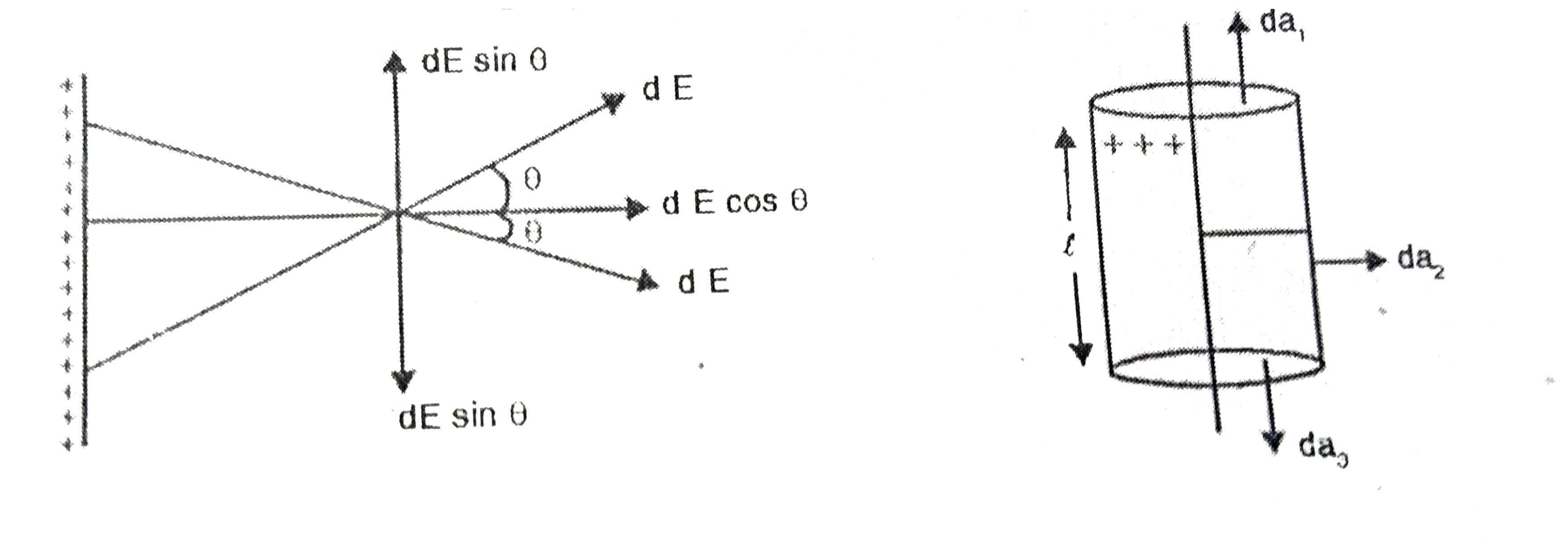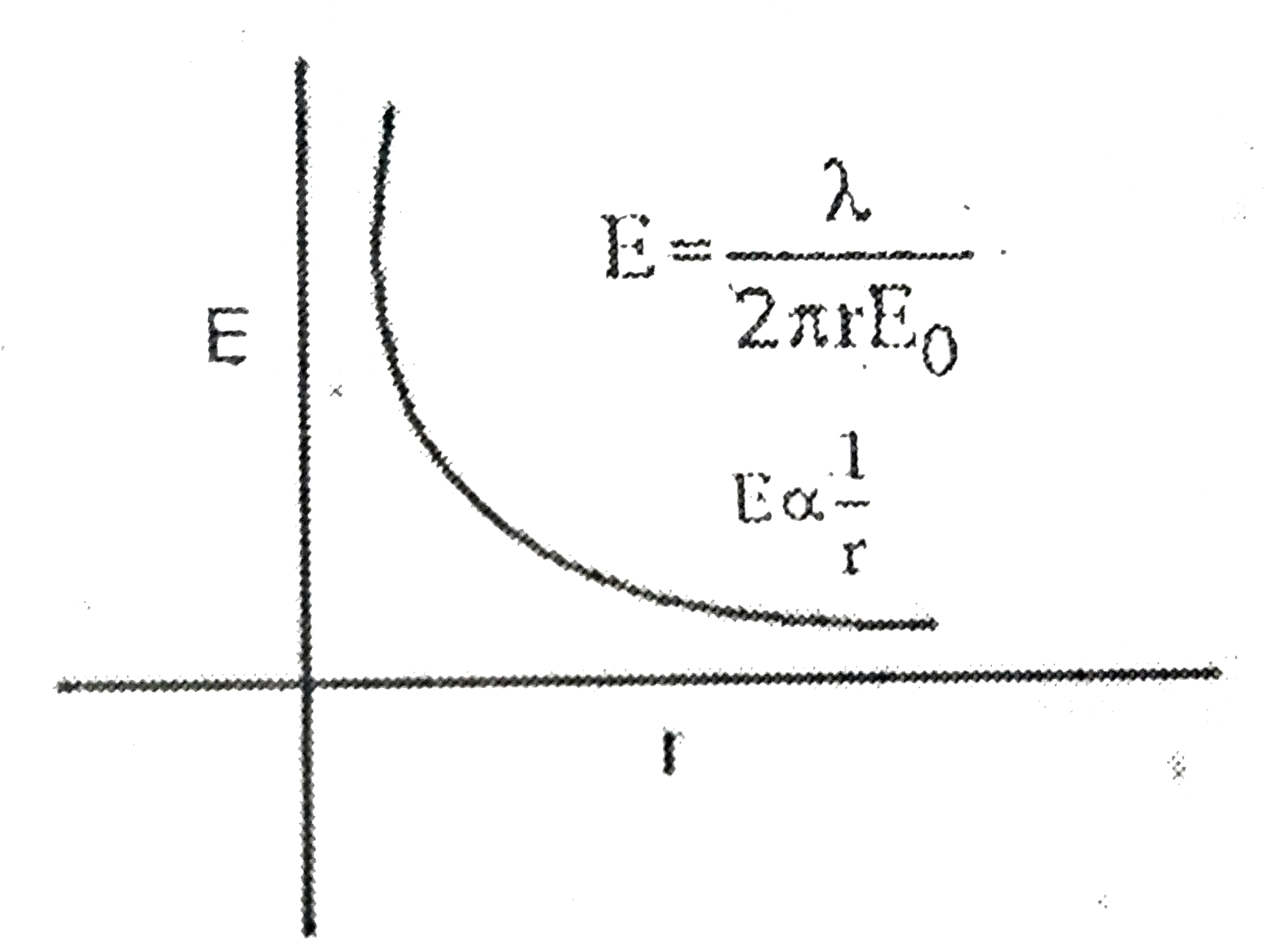(a) Use Gauss's law to derive the expression for the electric filed due to straight uniformaly charges infinite line of charges density .
(b) Draw a graph to show the variation of E with perpendicular from the line of charge.
(c) Find the work done in brining a charge q from prependicular distance to .
(a) 
Equate them :
(b) 
(c) Work done to moving from to
Similar Questions
Using Gauss's law, derive an expression for the electric field intensity at any point near a uniformly charged thin wire of charge/length=λC/m.
View SolutionUse Gauss'law to derive the expression for the electric field (→E) due to a straight uniformaly charged infinite line of charge density λCm−1
(b) Draw a graph to show the variation of E with perpendicular distance r from the line of charge.
(c) Find the work done is bringing a charge q from perpendicular distance r1→r2(r2<r1)View SolutionDraw a graph to show the variation of E with perpendicular distance r from line of charge.
View SolutionUsing Gauss's law, derive an expression for the electric field intensity at any point near a uniformly charged thin wire of charge/length=λC/m.
View SolutionState Gauss's law in electrostatics. Using this law derive an expression for the electric field due to a uniformly charged infinite plane sheet.
View SolutionState Gauss's law in electrostatics. Using this law derive an expression for the electric field due to a uniformly charged infinite plane sheet.
View SolutionState Gauss' law in electrostatic. Using it derive an expression for the electric field due to an infinitely long straight wire of linear charge density λ C/m.
View SolutionUsing Gauss’ law, derive an expression for the electric field at a point near an infinitely long straight uniformly charged wire.
View SolutionUsing Gauss’ law, derive an expression for the electric field at a point near an infinitely long straight uniformly charged wire.
View SolutionUse Gauss's law to derive the expression for the electric field between two uniformly charged large parallel sheets with surface charge densities σ and −σ respectively.
View Solution

